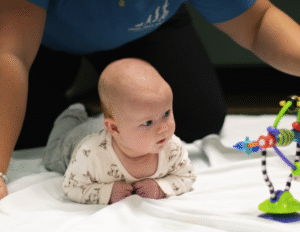Our communication is made up of many factors: the words we use, the grammar of our sentences, and the meaning behind our messages. The social aspects of communication, however, have a huge impact on how a listener understands and interprets our message.
Speech-language pathologists consider “pragmatics”, or how we use language, to be just as essential to communication success as vocabulary and grammar, but sometimes this area can be overlooked.
There are many verbal and non-verbal skills that are required for good social communication. Some of these include:
- Taking turns in a conversation
- Talking about appropriate topics and changing topics successfully
- Knowing when and how to begin and/or end a conversation
- Standing the correct distance away from other people
- Making eye contact
- Using facial expressions and gestures that match what a person is feeling
- Recognizing and interpreting others’ facial expressions and gestures
- Knowing how to successfully communicate emotions
- Using the right volume for the given situation
- Changing behavior based on the communication partner (e.g. friend vs teacher vs parent) or environment (e.g. school vs park vs home)



